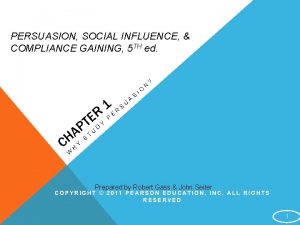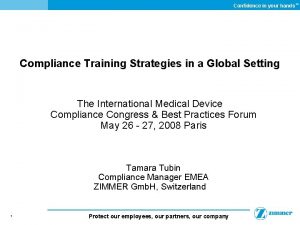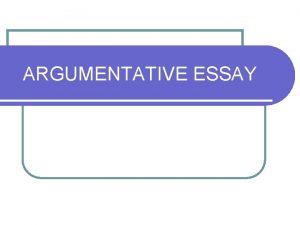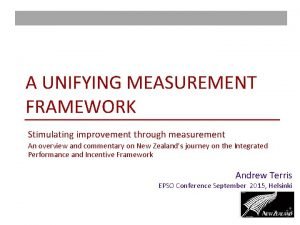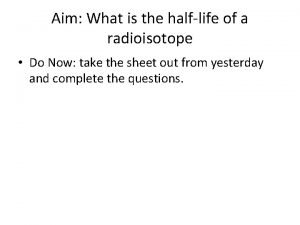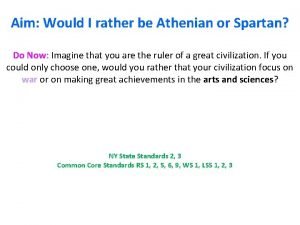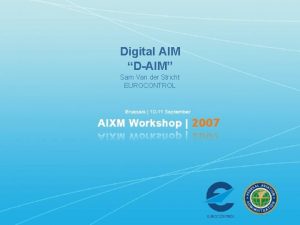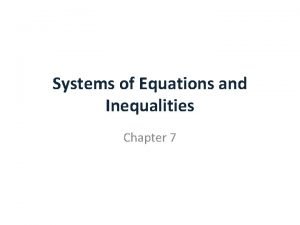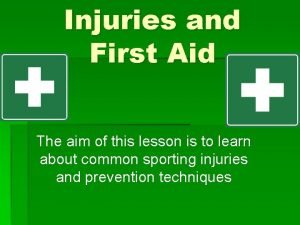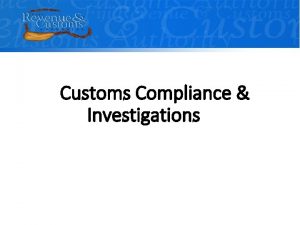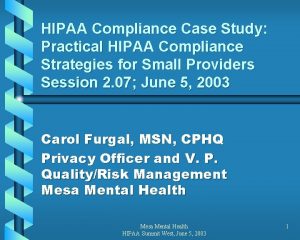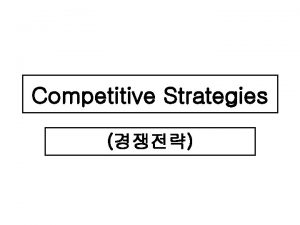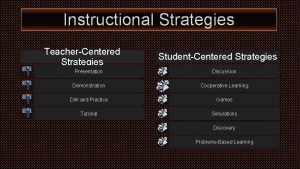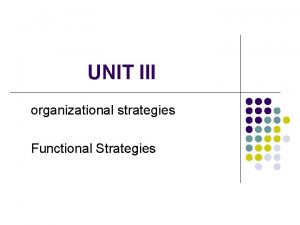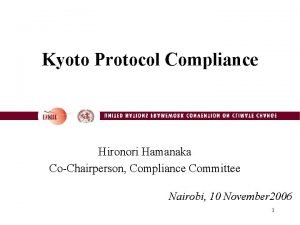Aim 1 What is compliance What strategies are


































- Slides: 34

Aim: 1. What is compliance? What strategies are used to induce compliance? DO NOW: 1. GO OVER TEST 2. Complete Check for Understanding p. 30 3. What does comply mean? Homework: • Read text pps. 292 – 315 • Valentine Assignment Due Wednesday

Compliance • Change in behavior to an explicit request • Many of these techniques are used in advertising to change attitudes (beliefs we have towards something/someone) • Watch the video clip? How do they persuade us? https: //www. youtube. com/watch? v=0 IF 5 n. De. IPiw

Compliance Strategies Chart • Lowball Procedure p. 13 • Foot-in-the-door phenomenon p. 11 • Door-in-the-face phenomenon p. 12 • Norms of reciprocity p. 14 • Central Route p. 15/16 • Peripheral Route p. 16 • Mere Exposure • Bait and Switch – p. 9 - 10 Task: Read about your assigned strategy and 1. Define/ Describe it/ Why/ How it works 2. Apply it to your new summer job. You are selling books over the phone to families in the US. You will make a 10% commission on sales. How could you use this method to optimize your sales?

RSA ANIMATE VIDEO • https: //www. youtube. com/watch? v=c. Fd. Cz. N 7 RYbw • What are the six principles and how they can be applied to increasing productivity.

Aim: 1. What is compliance? What strategies are used to induce compliance? DO NOW: 1. How did they try and get people to buy Moistrell? https: //www. youtube. com/watch? v=0 IF 5 n. De. IPiw Homework: • Valentine Assignment Due Tomorrow

Check For Understanding • • Page 19 Page 21 - 22 Part II – Central vs. Peripheral Part III – Identify Examples

HOW DO WE CHANGE ATTITUDES? • Techniques used in advertising.

Two Routes Leading to Persuasion Central route • evokes lasting agreement • This route is used when we are interested in the argument being proposed • Involves a more logical, thought-out process swopepsych. com Peripheral route • triggers temporary liking/acceptance • Using a celebrity, sex, babies, etc. , to sell a product • Tends to appeal to emotions, not cognitions

How do the following effect the comprehension and acceptance of a message? • • SOURCE MESSAGE MEDIUM AUDIENCE

The following effect the comprehension and acceptance of a message… • SOURCE – Credibility is most important when we are not inclined to pay attention to the message itself • MESSAGE – Tune out messages that do not support our point of view – Novel arguments are more convincing then old standbys – Fear is effective, but too much can turn off an audience

• Medium – Writing favors complex arguments – Video/live help audience grasp main idea of argument Audience – Harder to change attitude of audience if they have strong commitment to present beliefs – Harder to persuade more educated audiences – Harder to change childhood beliefs

Foot-in-the-door phenomenon • The tendency for people who have first agreed to a small request to comply later with a larger request. If I give out an answer on a quiz, what happens next?

Foot in Door Technique • once you grant a small request you are likely to grant a larger one • How do charities, children, friends, bosses use this technique? • Children - "Can I go over to Suzy's house for an hour? " is followed shortly by "Can I stay the night“ • Friend - "Can I borrow the car to go to the store? " may be followed by "Can I borrow the car for the weekend? • Charities - "Would you sign this petition for our cause? " is followed by "Would you donate to our cause? "

Lowball Procedure – • First induce someone to do something, then raise cost of compliance • How could a salesman use this technique to sell a car? Vacation? • A person agrees to buy a car at a low price. The sales person then apologizes that the wrong price was on the car. The person still agrees to buy it at the higher price. • A family books a package holiday. They find that there are surcharges. They pay these without question. swopepsych. com FOOT IN DOOR

Norms of Reciprocity • Cultural norm – idea if someone gives us something we owe them something

Door-in-face Phenomenon • The tendency for people who say no to a huge request, to comply with a smaller one. If I ask my husband asks for the 1952 Topps Mantle card ($15 k) I will But I may let him say? NO buy a new Xbox game. swopepsych. com Door in face

Door In Face Effect – • under certain circumstances if people refuse to comply with a request they may comply to a second one. Examples include…. • Kids sell $25 calendar or $2 candy • Buy the $600 photo package or the $200 one

That’s Not All Technique – • present product at a specific price but instead of allowing the consumer to respond, the salesperson adds something else to make the deal even better • You are a cutlery salesman. How do you use this technique? • ”Ladies and gentlemen, I'm not only going to reduce this by 10%, not even by 20% and not even by 40%. Today, ladies and gentlemen, the price is reduced for you by a whopping 50%! • I'm not going to give you this cookie cutter. No. That's not all I'm going to give you. For the same price, I'm going to throw in a fine steel spatula. A bargain I hear you say? But I'm going to make it even better, with this splendid temperature probe, absolutely free. Now, who wants this wonderful offer now? ”

Hard to Get Technique- • rarer object is harder to get and is perceived as more valuable • Impossible to get something after time period passes • “This is the last model like this available —after it goes, that’s it. ” • “sale ends soon, ” • “supplies are limited”

Attitude and Behavior You have a belief that cheating on tests is bad. But you cheat on a test!!! The teacher was really bad so in that class it is OK. • Do attitudes tell us about someone’s behavior? • La. Piere’s Study Cognitive Dissonance Theory • People want to have consistent attitudes and behaviors…. when they are not they experience dissonance (unpleasant tension). • Usually they will change their attitude.

Cognitive Dissonance Theory • State of tension that exists when our attitudes do not match our actions. As a result we can… 1. Change our behavior/ beliefs 2. Deny evidence 3. Or rationalize our behavior https: //www. youtube. com/watch? v=kor. GK 0 y. GIDo


Cognitive Dissonance Theory

Can wearing a lab coat make you smarter? • Effect of Self Fulfilling prohecy • http: //www. themarysu e. com/lab-coatsincrease-attention/


CENTRAL OR PERIPHERAL?

CENTRAL or PERIPHERAL?







 Antigentest åre
Antigentest åre Compliance gaining strategies
Compliance gaining strategies Compliance gaining strategies
Compliance gaining strategies Compliance training strategies
Compliance training strategies Faa
Faa Commercial farming
Commercial farming Short-term health goals
Short-term health goals Aim of micro teaching
Aim of micro teaching Cast kirksite tooling
Cast kirksite tooling Aim of argumentative essay
Aim of argumentative essay Kseniya khromova
Kseniya khromova Aim of workshop
Aim of workshop The final aim of negotiation
The final aim of negotiation Aim slds
Aim slds Aim high academy trust
Aim high academy trust Micro critical aseptic field
Micro critical aseptic field Triple aim framework
Triple aim framework Vowel teams list
Vowel teams list Half life aim
Half life aim Resistance welding basics
Resistance welding basics What type of angle is this
What type of angle is this Spartan aim
Spartan aim Dream crush big commerce
Dream crush big commerce Eurocontrol sam
Eurocontrol sam Nwkraft regulation
Nwkraft regulation Badassbuddy
Badassbuddy Aim who
Aim who Chapter 7 systems of equations and inequalities
Chapter 7 systems of equations and inequalities Definition of rch
Definition of rch Aim injection molding
Aim injection molding Doc 10066 icao
Doc 10066 icao Aim-c
Aim-c Aim 13
Aim 13 The aim of first aid is to
The aim of first aid is to I did or i done
I did or i done

